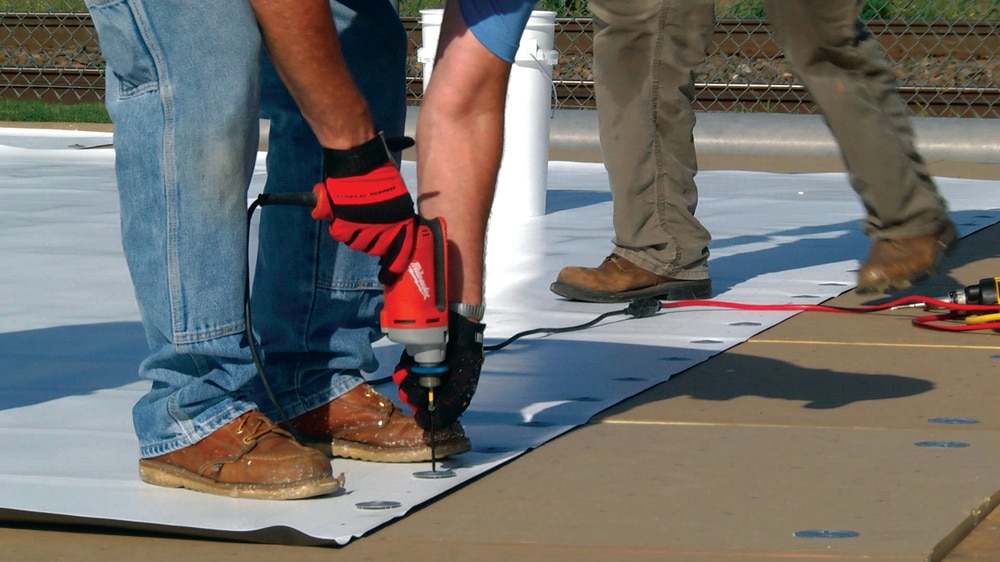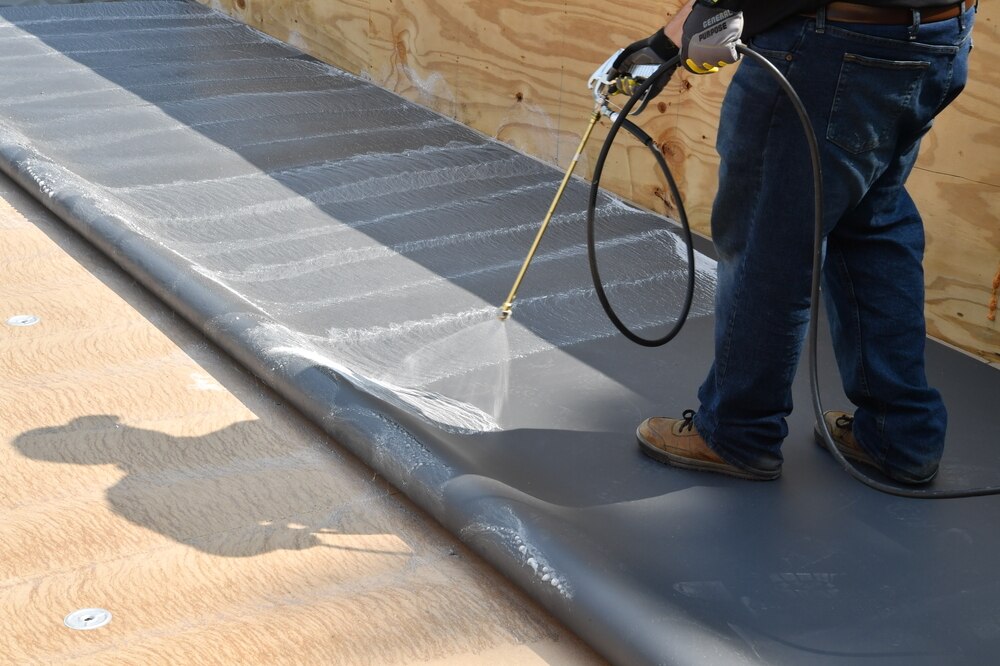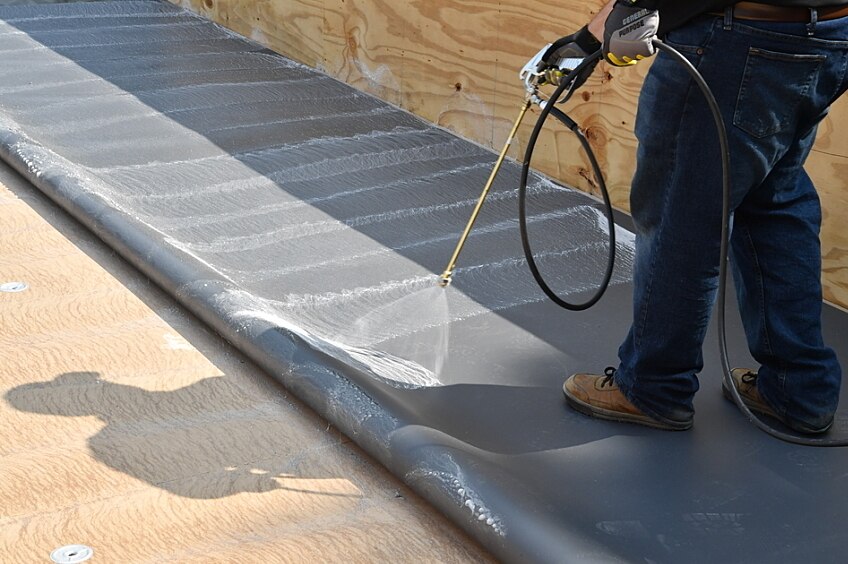A typical PVC roofing system will consist of insulation board and membrane over the structural deck. As with other single-ply roofing systems, there are multiple ways to fasten the PVC roofing membrane.
Each option carries pros and cons. Factoring in the needs of the building owner, the ease of the contractor performing the installation, and a given area's possible weather conditions, here are three popular attachment methods.
1. Mechanically Attached Installation

Contractors may choose to install the PVC using a mechanically attached method, which relies on specially designed metal plates and fasteners to attach the insulation to the deck and the membrane over the insulation to the deck.
Mechanically attached PVC roofing systems can be installed quickly and cost effectively. Mechanically attached systems tend to have lower wind uplift resistance compared to adhered or induction welded systems, however, this performance can be improved by using narrower PVC sheets and supplemental fasteners. Building codes and manufacturer specifications may provide guidance on how many fasteners are needed per square foot—a higher number may be necessary in high-wind areas.
2. RhinoBond® Installation

The RhinoBond® Attachment System is an induction welded option that uses the same plate to fasten both the insulation to the structural deck and the membrane to the insulation.
Using this method, insulation boards are attached to the deck using the RhinoBond® machine, which installs a screw and a plate. After the PVC membrane is rolled out over the insulation boards, the seams are welded. The RhinoBond® machine then uses an induction welding method to weld the membrane to the plate below, creating strong attachment without penetrating the membrane itself.
3. Adhered Installation

Some PVC roofing installations rely on adhesives to attach the membrane to the insulation board. However, these adhesives may not eliminate the need for fasteners in the system. Many adhered installations still rely on fasteners to attach the insulation board to the structural deck.
In an adhered membrane application, the PVC membrane is adhered to the insulation boards. For instance, a 2-part low rise foam adhesive can be used to adhere fleece-back PVC membranes for roof-recovers. The fleece-back PVC membrane can be applied directly over an existing asphaltic system with 2-part low rise foam.
Additionally, manufacturers like GAF are developing new solutions to help contractors efficiently adhere PVC membranes, like the EverGuard® PVC Quick-Lay Adhesive and the EverGuard® PVC Quick Spray Adhesive. EverGuard® PVC Quick‑Lay Adhesive is a one-sided, wet lay-in, water-based adhesive useful for bonding smooth EverGuard® PVC membranes to various substrates. EverGuard® PVC Quick Spray Adhesive is a sprayable, solvent-based contact adhesive useful for bonding smooth EverGuard® PVC and PVC KEE membranes to various substrates. Both EverGuard® PVC Quick-Lay Adhesive and the EverGuard® PVC Quick Spray Adhesive provide faster membrane installation than traditional solvent-based bucket and roller bonding adhesives.
The best attachment method for any PVC installation will depend on the building's location and function as well as any special weather conditions. If you are unsure about the right attachment method for your project, contact your GAF territory manager to review your project and help you determine the best solution.

